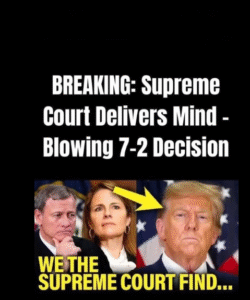The Supreme Court of the United States has delivered a significant blow to California’s pioneering electric-vehicle (EV) regulatory program, dealing what many describe as a major setback in the state’s clean-transportation ambitions. The case and its implications reach far beyond California, impacting auto manufacturers, fuel producers, state regulatory authority and the future of EV mandates across the U.S.
🔍 What Happened?
In June 2025, the Supreme Court ruled that a group of fuel-producers have the legal standing (under Article III of the Constitution) to challenge the Environmental Protection Agency’s approval of California’s waiver to set its own tailpipe-emissions and zero-emission vehicle (ZEV) standards. Reuters+1
At issue: Under the federal Clean Air Act, California may request a waiver from the EPA that allows it to enforce stricter vehicle-emissions standards than the federal floor. California had used that power to impose ambitious EV mandates—requiring a rising share of all new car sales in the state to be zero-emission. Green Building Law Update+1
The court’s majority held that the fuel producers could pursue their claims because the regulations likely caused economic harm to them (reduced gasoline/fuel demand) and invalidating the waiver could redress that harm. Justice Brett Kavanaugh wrote the majority opinion. Reuters+1
📉 Why It’s a Blow to California’s EV Mandate
While the ruling does not immediately strike down California’s EV targets, it significantly weakens their legal foundation and raises serious uncertainty:
-
It opens the door for fuel and petroleum-related businesses to challenge California’s regulations, thereby slowing or altering implementation. �citeturn0search2turn0search4
-
The decision signals that the courts may be less deferential to state waivers when economic downstream harms are claimed — meaning California’s unique regulatory carve-out is under threat.
-
On a broader level, because eleven other U.S. states (and D.C.) had adopted California’s standards or mirror-rules, the ripple effects could roll back or stall nationwide EV momentum. CalMatters+1
-
The timing is critical: California’s goals included phasing out new gasoline-powered vehicles by model year 2035 (100 % ZEV sales) and interim targets (35 % new ZEV by 2026, 68 % by 2030). These mandates now face legal and legislative headwinds. CalMatters
🤔 What’s at Stake
For California and states following its lead
California has long set its emissions-bar higher than the federal baseline, citing smog, climate and public-health imperatives. The new uncertainty complicates how the state will meet its own regulatory targets and federal air-quality mandates. A weakened waiver could jeopardize those efforts.
For automakers and the auto industry
The decision affects how automakers plan production, especially since they build for multiple states under California standards. The industry had argued the mandates were “unachievable” and costly. With the waiver weakened, automakers may delay EV investment or pivot strategy. CalMatters
For the fuel & refining industry
Fuel producers are the direct plaintiffs whose standing was affirmed. The ruling gives such industries a new pathway to challenge regulations that reduce demand for liquid fuels. This could curtail future climate-centric regulations beyond automobiles. Green Building Law Update
For consumers and infrastructure
EV adoption depends not just on cars but charging infrastructure, grid readiness, supply of batteries and consumer affordability. This ruling injects regulatory uncertainty that can stall infrastructure investment and consumer confidence.
For environmental and climate policy
California’s regulation has been a flagship of U.S. state-level climate leadership. This development raises questions about how far states can go in implementing aggressive climate policy unilaterally.
📜 Legal & Regulatory Details
Key legal doctrines in play:
-
Standing: The court held that downstream economic harm is sufficient when a regulation affects a connected business chain, especially when “commonsense economic principles” predict outcome changes. Skadden
-
Waiver authority: Under the Clean Air Act’s § 209(b), California can apply for waivers to set emissions standards more stringent than federal ones. The case raises the question of how far that waiver goes when the target is global greenhouse gases rather than strictly local smog.
-
Remedies and vacatur: The court did not directly resolve whether invalidating the waiver (vacatur) is permissible; that question remains. Green Building Law Update
🗺️ What Happens Next?
-
The case will return to lower courts for further litigation on the merits — whether California’s regulations are lawful under the Clean Air Act and whether the waivers were properly granted. Reuters
-
California officials have vowed legal action. State Attorney General Rob Bonta stated the state will “vigorously defend” its authority. Reuters
-
Automakers, fuel firms, and infrastructure investors will likely monitor how this plays out before making large commitments in EV manufacturing or charging networks.
-
States that follow California’s model may reconsider or delay implementing the toughest standards, awaiting clarity.
-
Legislative action may come: Congress or states could seek to clarify or limit California’s waiver authority, leading to a broader national policy shift away from state-driven ZEV mandates.
📝 Why It Matters
This ruling represents more than a technical procedural victory. It hints at a shift in how regulatory power is distributed:
-
It signals that states — even those with long-standing regulatory special status like California — may face stronger legal checks when their mandates impact major industries downstream.
-
It gives business interests a stronger footing to challenge regulations, which could slow regulatory activism across many sectors beyond transportation (e.g., energy, manufacturing).
-
It raises the stakes for climate action efforts at the state level: if California’s ambitious vision can be undermined, smaller states may be more cautious in adopting aggressive mandates.
-
Finally, it forces a broader policy question: Should the transition to EVs and zero-emission vehicles remain state-driven (and patchwork), or should there be more uniform federal standards to avoid this kind of legal fragility?
✅ Bottom Line
While California’s EV mandate is not yet invalidated, the Supreme Court’s decision constitutes a major crack in its armor. The ruling affirms that its regulations – once thought relatively secure due to its waiver under the Clean Air Act – can be subject to upstream challenge by industries affected by market shifts.
California’s ambitious timeline—to go 100 % ZEV for new light-duty vehicles by 2035—now faces a tougher legal path and possibly delayed implementation. Other states following California’s lead will also feel the ripple effects.
In short: The regulatory momentum behind EV mandates just hit a stronger headwind, and how California (and the nation) navigates this will shape the trajectory of transportation, clean-air policy and automotive innovation for years to come.


